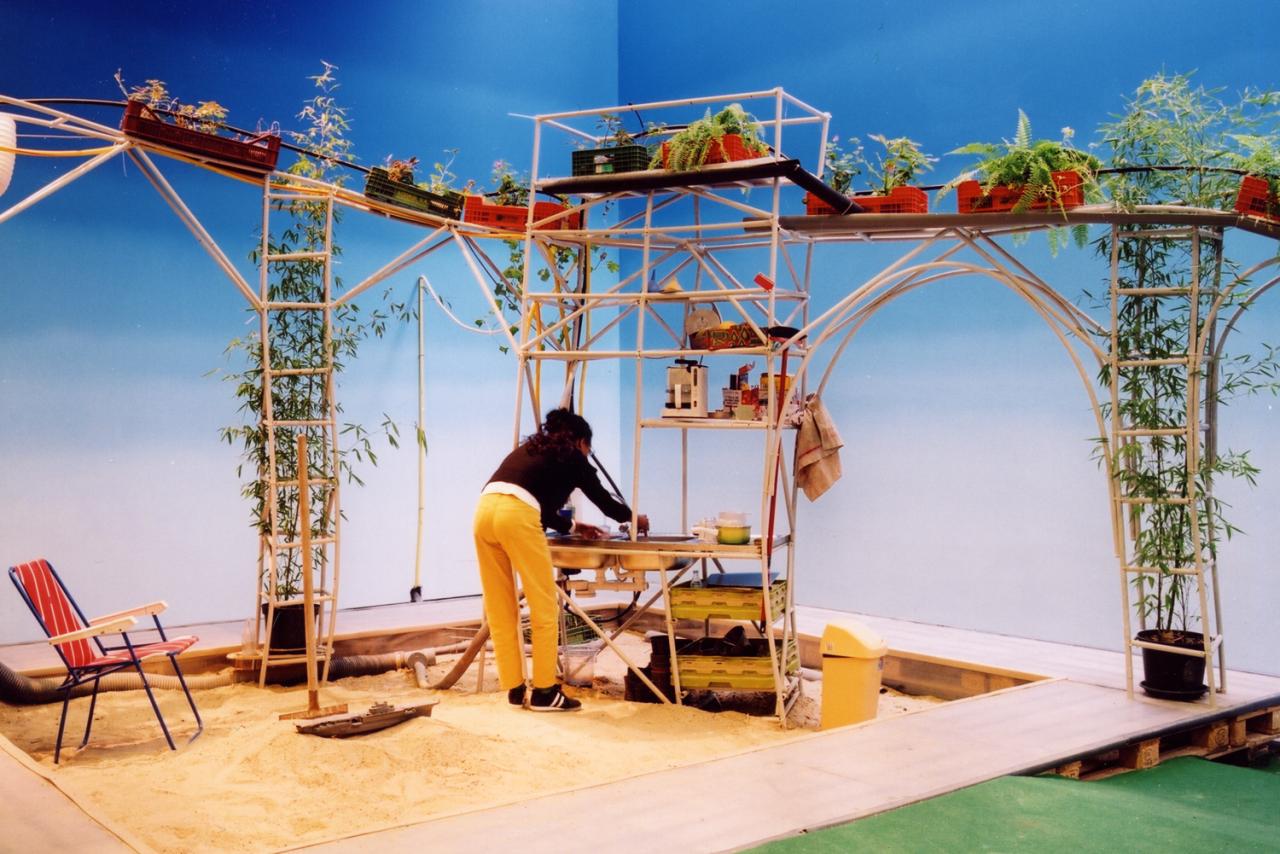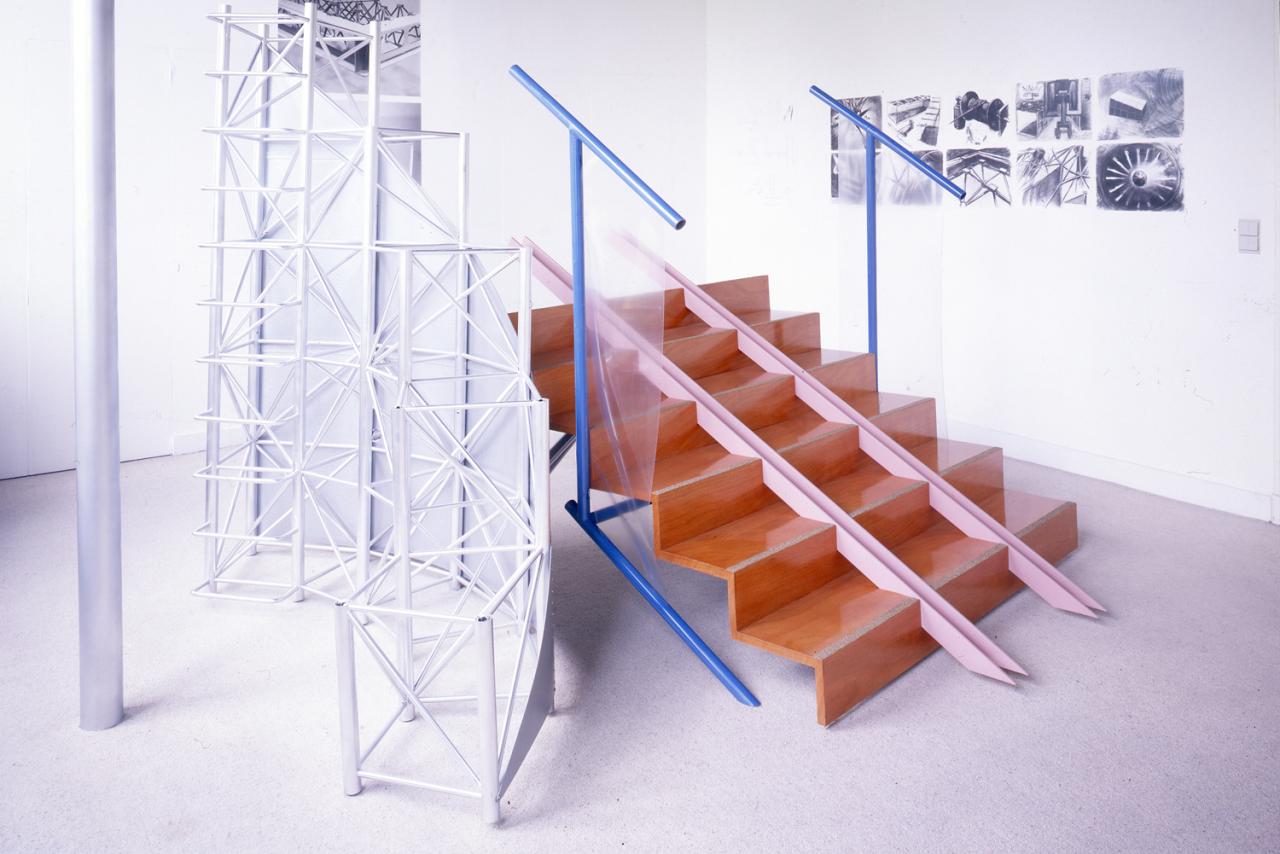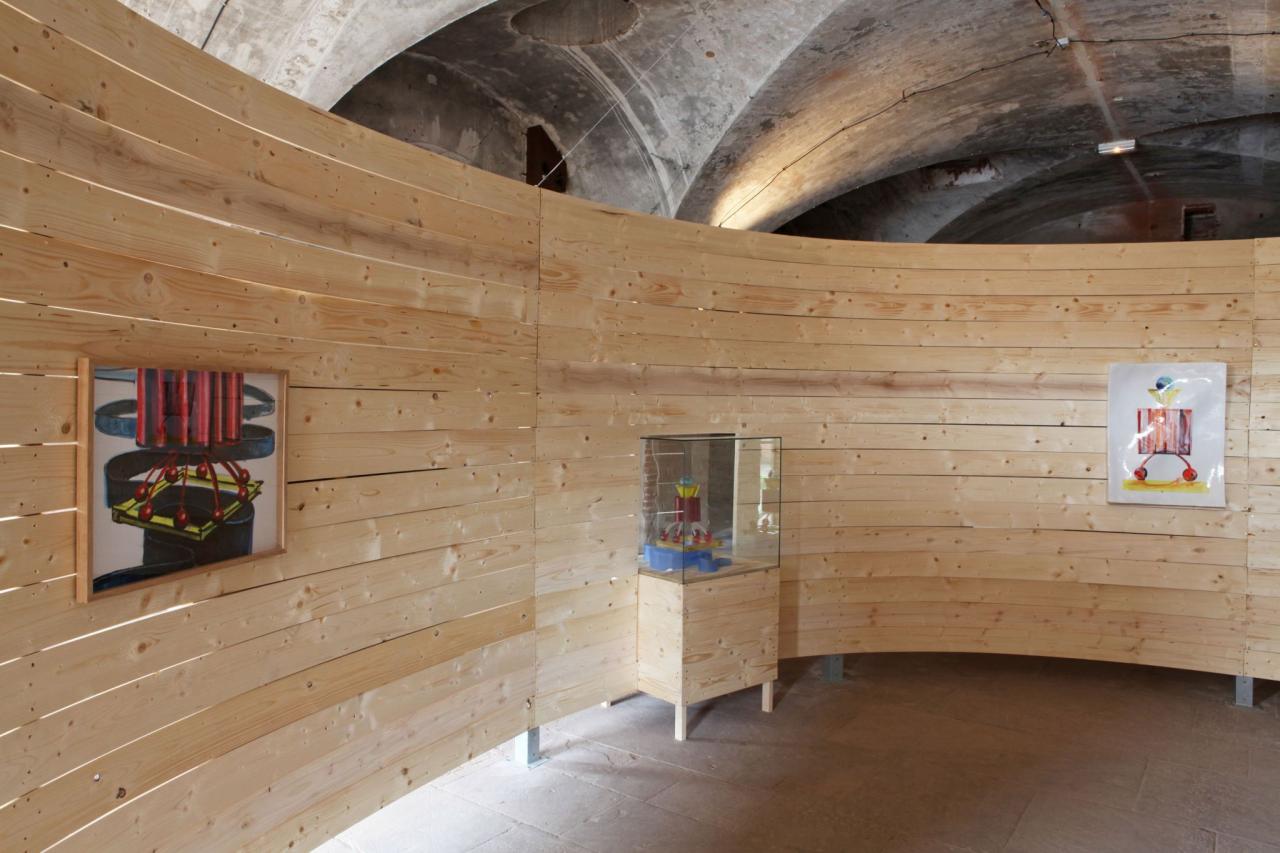Niek van de Steeg
Born in 1961
Lives and works in Villeurbanne (Rhone)



Since 1990 Niek van de Steeg has been working on “the relation between art and society, by way of a vision about construction, architecture and urbanism, which can be linked to a great tradition in art history since the Russian avant-gardes: the quest for the model of a new world.” 1
The relation between utopia and society is the main thrust of his research, encompassing subjects and places as varied as the realization of the Common Market of the Europe of the Twelve, the abandonment of the Renault factories on the island of Seguin, the Emmaüs community in Dijon and Amsterdam, the garden of the Villa Médicis, the Information Centre at the entrance of a kibbutz at Ein Harod, a construction site fence in Paris, a Regional Economic Activity Estate in Languedoc-Roussillon, etc.
These contexts define the premises of huge fictional constructions (the Pavillon à Vent, the Très Grande Administration démocratique, the Structures de Corrections and the Maison de la Matière Première) which are gauged by the reality of the exhibition. “These projects, with their many different meanings, are developed in varied forms and media, used in a paradoxical and dialectical way, comparing what is and what might be with the troubling reality of the administrative, political, industrial, commercial, world system…”.2
In the age of glocal culture, Niek van de Steeg is reinventing the notion of Site-Specific Art, taking into account the many different topographical coordinates of the place where he works. […] An assertion of the intrinsic freedom of artistic activity, understood as a place of intellectual and not just formal production. An assertion of the need to rub up against contemporary systems of representation and authority. An assertion of the possibility of the artist to conduct himself other than as a servile illustrator of the powers of the present day and age. The challenge is nothing less than that of a reappropriation by art of its role as a symbolic counter-force in society.” 3
1 2 Excerpt from an interview with NvdS by Hou Hanru, for the exhibition Yellow Cake & Black Coffee, Centre d’art Le LAIT, Albi, 2012
3 Excerpt from Vamos bien, Pascal Beausse, catalog for the exhibition Tableaux noirs en couleurs, CAP Saint-Fons, 2007
© Adagp, Paris